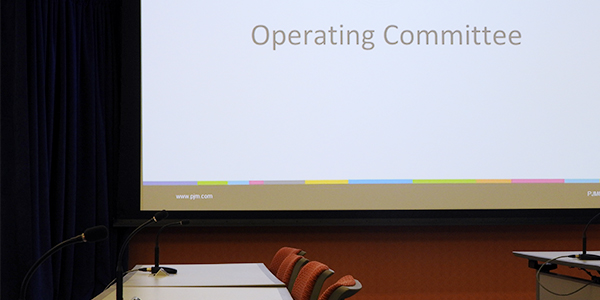VALLEY FORGE, Pa. — PJM’s Operating Committee unanimously endorsed clarifications for non-retail behind-the-meter generation (NRBTMG) business rules on Tuesday, completing the first two key work activities identified in a problem statement/issue charge approved in March. (See “PJM Continues Review of non-Retail BTM Generation Business Rules” in PJM Operating Committee Briefs: Feb. 5, 2019.)
The revisions to Manuals 13 and 14D will clarify the reporting, netting and operational requirements of NRBTMG that will ensure member and PJM responsibilities, processes and procedures are clear and adequately captured, said Terri Esterly, PJM’s senior lead engineer for Capacity Market Operations.
NRBTMG refers to resources used by municipal electric systems, electric cooperatives or electric distribution companies to serve load. They do not participate as supply resources in PJM markets but can be netted against their wholesale load to reduce transmission, capacity, ancillary services and administrative fee charges.
PJM’s rules on such resources resulted from a 2005 settlement agreement (EL05-127), before development of the RTO’s capacity market and CP constructs. NRBTMG resources can be called upon during the first 10 maximum generation emergencies annually, while CP resources are required to perform during all performance assessment intervals (PAIs). BTM operators that fail to perform face reduced netting benefits. In 2006, the grid operator identified about 400 MW of NRBTMG.
Esterly said the manual updates will not change the terms of the 2005 settlement agreement. She also told stakeholders preliminary data collection suggests PJM’s existing nameplate capacity clocks in around 1,800 MW. Several generators, however, did not submit summer-rated ICAP values, likely contributing a significant undercount.
Operations Reports Staying in SOS
PJM will no longer review systems operations reports during the monthly OC — unless it is answering specific stakeholder questions or highlighting an unusual event, like a polar vortex, Secretary Don Wallin said.
The reports will be posted along with other meeting documents, as usual, but verbal reviews will only occur at the Systems Operations Subcommittee (SOS).
In its last review with the OC, however, PJM said it set a new weekend peak value of 150,454 MW — displacing the 149,644 MW record set on July 7, 2012. This year’s summer peak of 152,315 MW was hit July 19 during a five-day hot weather alert that covered the majority of the RTO’s footprint.
January 2018 Extreme Cold Weather Report
PJM continues its review of recommendations included in the NERC/FERC January 2018 Extreme Cold Weather report and may bring necessary recommendations to stakeholders at the September OC.
FERC last month called for reliability rules requiring generator owners and operators to winterize their units and provide their reliability coordinators and balancing authorities with information about their preparations. (See FERC Calls for Cold Weather Reliability Standard.)
The commission issued the directive as a result of a joint FERC-NERC investigation into the abnormal cold and higher-than-forecast demand that caused MISO and SPP to seek voluntary load reductions and nearly forced load shedding in MISO South on Jan. 17, 2018. (See FERC, NERC to Probe January Outages in MISO South.)
Alpa Jani, PJM’s senior consultant for dispatch, said many of the report recommendations were previously discussed in the context of previous polar vortexes and the capacity market.


